Membrane processes
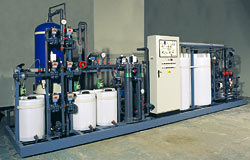
The current state of development of membrane technology has made it an alternative to ion exchange. The system achieves the best results in treatment of large flows.
The membrane processes are based on the capacity of semi-permeable membranes to separate particles and solutes from a liquid flow.
There is a wide range of applications, depending on the parameters of the water to be treated and the type of membrane.
Treatment of supply water:
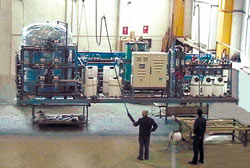
MICROFILTERING
Clarification of colloidal and turbid solutions. Elimination of particles, bacteria etc. from process water for the chemical, foodstuffs and pharmaceutical industry..
ULTRAFILTERING
Elimination of viruses, bacteria, pyrogens, etc. from process water for the above industries.
REVERSE OSMOSIS
Sterilisation and deionisation of water for the chemical and pharmaceutical industry. Deionisation of supply water for boilers, galvanising, coating and electronics industries, etc. Desalination of brine and sea water. Production of ultrapure water for the electronics industry.
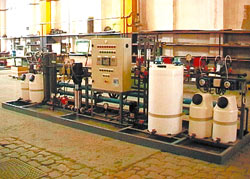
Recycling of water and industrial spillages treatment:
Industrial spillages and an increasing need to recycle water provide an important area for the use of membrane processes following traditional treatment, in a balance between requirements and economic considerations.
Recovery of products in industrial processes:
In many industrial processes, raw materials are lost - generally dissolved during washing. Depending on their importance and/or strategic considerations, it is possible to recover these using membranes. Indeed, in some industrial processes, sub-products are created which can be used to economic benefit. The optimal means of separating them is by using membranes.
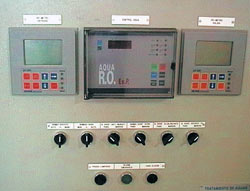
Reverse osmosis is an alternative to resin units for treating inflow water for industrial processes. The technique consists of forcing the water through a series of semi-permeable membranes housed in pressure pipes. These membranes are capable of separating substances according to their physical and chemical properties.
The membranes are selected according to the saline concentration and the quality of the water required. Construction and lay-out of the pressure pipes and their connections depend on the design data. The water flow is controlled using rotameters and the pressure is monitored by means of pressure gauges. The system requires pre-treatment of the inflow water with pH monitoring, a process which is controlled by means of a PLC and the appropriate equipment installed on the control panel.
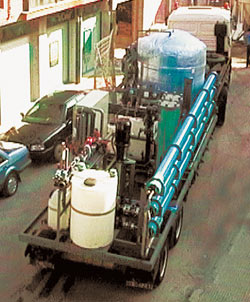
Generally inflow water requires pre-treatment before it passes through the membranes. This consists of filtering, micro-filtering and chemical dosing. The sand filters eliminate the thick solids suspended in the influx. The microfilters prevent passage of particles between 1 and 10 microns that pass through the sand filter and which might damage the membranes.
Dosing with chemicals is necessary to extend the service life of the membranes. After passing through the membranes, the water needs to be conditioned (basically to adjust pH) before it can be used.
This correction of the parameters is achieved using chemical dosing and/or atmospheric degasification. The units include a module for performing necessary regular maintenance on the membranes, in order to ensure proper operation. All elements are arranged on frames, thus aiding transport and installation.
